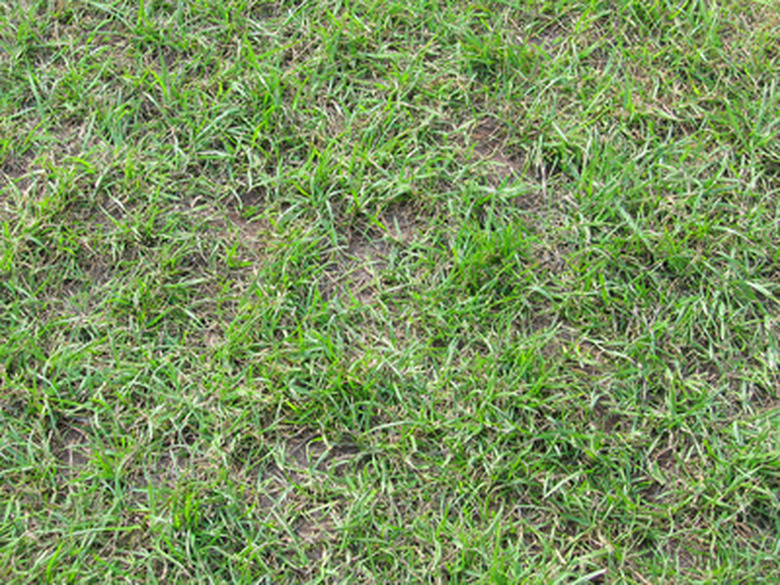How To Plant Annual Winter Rye Grass
Things Needed
- Rake
- Water
- Top soil
- Compost
- Annual rye grass seed
- Plastic bucket
- Spreader
- Sprinkler
- Mower
Many southern landscapes utilize annual rye grass to fill in bare spots in their lawns during the winter. The grass is hardy in USDA planting zones 3 through 9 and considered low maintenance and disease resistant. Annual winter rye grass germinates quickly, making for a speedy lawn green up. It is also less aggressive than some grasses, as it spreads by clumps instead of underground rhizomes. Once warm weather returns, the annual rye grass will die, but using it during the winter assists in having a green lawn year-round.
Seeding an Existing Lawn
Step 1
Rake the existing lawn's bare spots free of any dead grasses and remove any weeds. Annual rye grass seeds require contact with the soil for germination. Cleaning the planting site assures this.
- Many southern landscapes utilize annual rye grass to fill in bare spots in their lawns during the winter.
- Once warm weather returns, the annual rye grass will die, but using it during the winter assists in having a green lawn year-round.
Step 2
Water the existing lawn and bare spots before applying the seed. Rye grass seeds will adhere better to a moist surface.
Step 3
Sprinkle the rye grass seeds over the bare areas in your lawn. If the areas are not too large, you can place the grass seed in a plastic bucket and sow by sprinkling it around with your hands. If the area is large, use a spreader for easy application.
Step 4
Cover the rye grass seed with a light dusting of compost or top soil to assure soil contact. Cover the seeds with approximately one-quarter inch of soil, as covering the seed with too much soil can halt germination.
- Water the existing lawn and bare spots before applying the seed.
- Cover the rye grass seed with a light dusting of compost or top soil to assure soil contact.
Step 5
Water the rye grass seed thoroughly with a sprinkler after sowing. Hand watering with a hose has a tendency to move the grass seed from its location. Continue watering one to two times each day until germination in five to 10 days. Cut back the watering to two to three times per week, depending on local weather conditions.
Step 6
Mow the lawn approximately two to three weeks after the grass has established itself into the existing lawn. Set the mower on its highest setting.
Sowing a New Lawn
Step 1
Rake the planting site free of rocks, weeds, sticks or other unwanted vegetation before planting the rye grass seeds.
- Water the rye grass seed thoroughly with a sprinkler after sowing.
- Cut back the watering to two to three times per week, depending on local weather conditions.
Step 2
Add a 2-inch layer of compost or top soil to the existing soil, raking it evenly over the planting site. Water the planting site thoroughly for one to two days before sowing the rye grass seed. Water the area right before sowing the seed.
Step 3
Spread one-third of the rye grass seed over the planting site. Repeat this step two more times being sure to walk in different directions, evenly dispersing the seed. Use 8 to 10 lbs. of annual rye seed for every 1,000 square feet of area to be covered.
- Add a 2-inch layer of compost or top soil to the existing soil, raking it evenly over the planting site.
- Water the planting site thoroughly for one to two days before sowing the rye grass seed.
Step 4
Cover the rye seed with one-quarter inch of compost or top soil, so the seed makes full soil contact.
Step 5
Water the area thoroughly with a sprinkler after seed application. Continue to water the area each day until the rye seed germinates in five to 10 days. Taper off the watering to two to three times per week, depending on your local weather conditions. Mow the rye grass in approximately four to six weeks. This gives enough time for the grass to establish itself. Set the mower on the highest setting.
- Cover the rye seed with one-quarter inch of compost or top soil, so the seed makes full soil contact.
- Taper off the watering to two to three times per week, depending on your local weather conditions.
